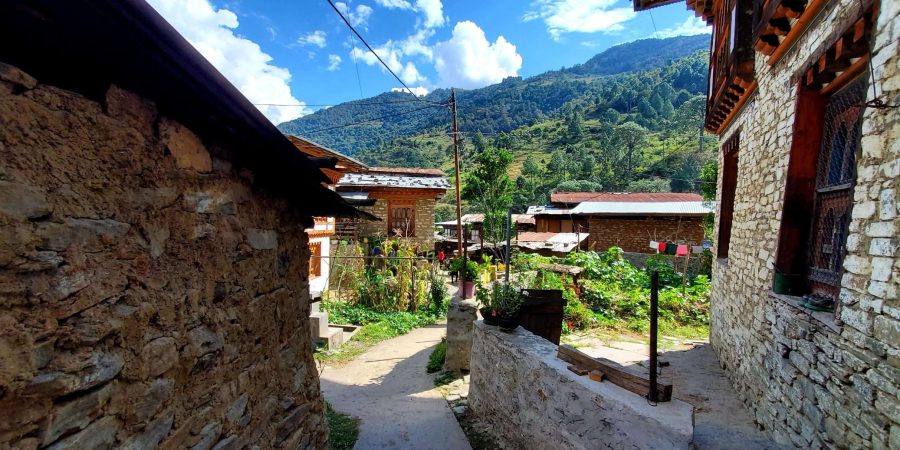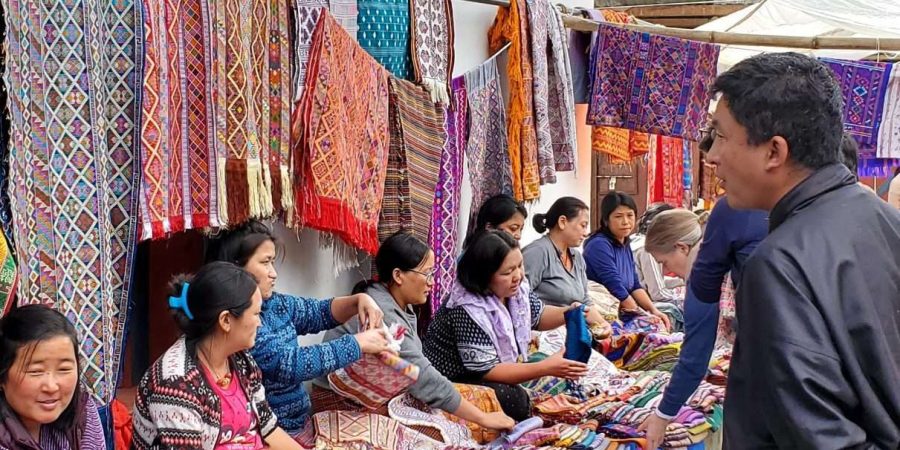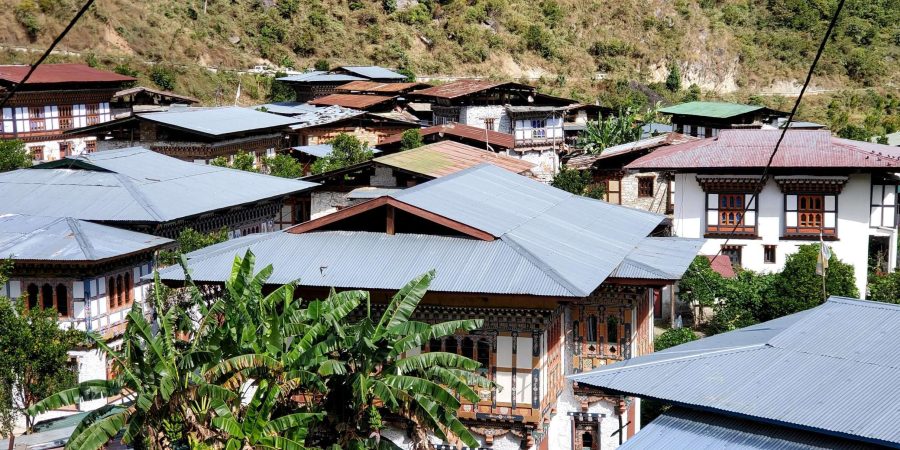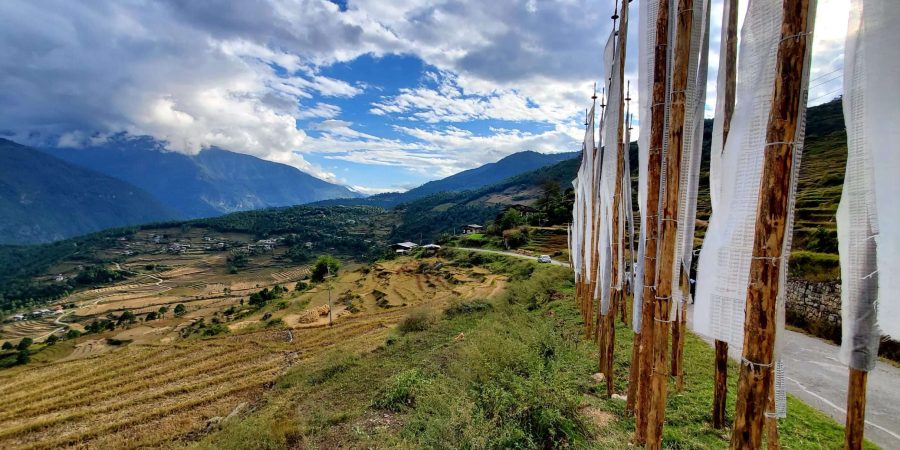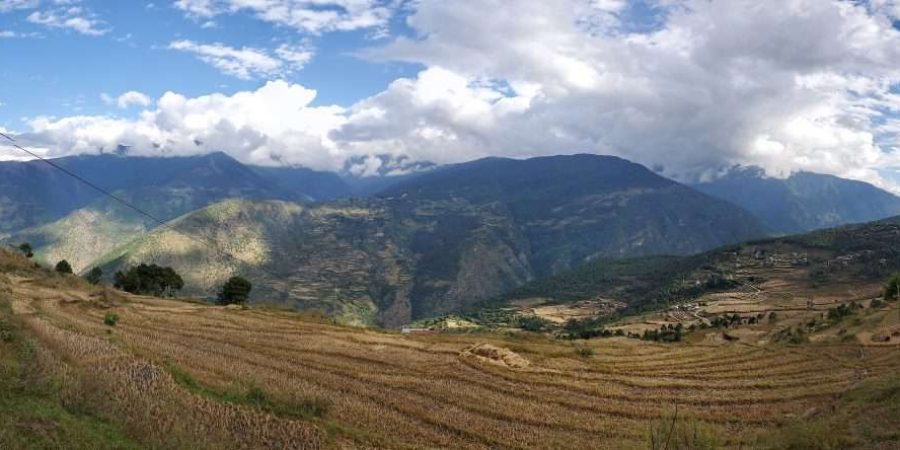Lhuentse, formerly known as Kurtoe, is an isolated district in Bhutan, rich in history and culture, and is the ancestral home of Bhutan’s royal family. This region, although geographically in the east, was culturally identified with central Bhutan. It was once traversed by a major trade route over Rodang La until the road to Mongar was completed. The district is particularly renowned for its weaving, with many Lhuentse women owning looms at home. The village of Khoma stands out for its kushutara (brocade) weaving, producing some of Bhutan’s most sought-after and expensive textiles. These weavings are so elaborate that they resemble embroidery and are typically used for kiras (women’s traditional dress), though bags and other smaller items are also crafted.
Lhuentse’s landscape is dramatic, with trips frequently taking visitors alongside cliffs high above the river valley. The region offers a comfortable ride along the main valley, barring any recent landslides. Among its notable landmarks is the Lhuentse Dzong, one of Bhutan’s most picturesque dzongs, perched high on a rocky outcrop overlooking the Kuri Chhu valley. This dzong has been renovated several times, most recently to repair damage caused by an earthquake in 2009.
A trip to Lhuentse offers an opportunity to explore the weaving village of Khoma and surrounding areas, where visitors can stay in homestays and immerse themselves in the local culture. Additionally, the small village of Dungkhar, named for its ridge shaped like a conch (dungkhar), is significant for being the place where Pema Lingpa’s son settled, linking the royal family’s ancestry to the Kurtoe region. For those interested in weaving or simply looking to experience Bhutan’s rich cultural tapestry, Lhuentse offers a unique and enriching journey into the heart of Bhutanese tradition and natural beauty.
Map
Interesting Facts
- Ancestral Home of the Royal Family: Lhuentse is the ancestral home of Bhutan’s royal family, adding a significant historical and cultural importance to the region.
- Famous for Weaving: The district is renowned for its weaving, particularly in the village of Khoma, known for producing kushutara, a type of brocade weaving that is highly valued and considered some of Bhutan’s most sought-after and expensive textiles.
- Geographical and Cultural Significance: Geographically located in the east, Lhuentse was culturally identified with central Bhutan. The region was historically significant due to the high route over Rodang La, which served as a major trade route until the construction of the road to Mongar.
- Picturesque Landscapes: The journey to Lhuentse offers dramatic landscapes, with routes frequently running alongside cliffs high above the river valley, providing stunning views and a thrilling experience.
- Lhuentse Dzong: The Lhuentse Dzong, sitting high on a rocky outcrop overlooking the Kuri Chhu valley, is one of the most picturesque dzongs in Bhutan. It has been renovated several times, most recently to repair damage from an earthquake in 2009.
- Cultural Exploration: Visitors to Lhuentse have the unique opportunity to immerse themselves in Bhutanese culture through homestays in the weaving village of Khoma and surrounding areas, providing a closer look at the traditional lifestyle and crafts of the region.
- Historical Sites: Dungkhar, the small village named for its conch-shaped ridge, holds historical significance as the settlement of Pema Lingpa’s son, linking the royal family’s ancestry to the Kurtoe region. This area offers insights into the deep-rooted history and lineage of Bhutan’s monarchy.
- Unique Biodiversity: The region’s riverside locations, such as Autsho, are home to diverse wildlife, including Assamese macaques, capped langurs in the trees, and black cormorants diving for fish, showcasing Bhutan’s rich biodiversity.
- Spiritual Sites: Lhuentse is dotted with significant spiritual sites, including monasteries and meditation caves associated with Guru Rinpoche and Pema Lingpa, offering visitors spiritual insight and a connection to Bhutanese religious practices.
- Homestays and Local Hospitality: With several homestays recognized by the Bhutan Tourism Council and national parks authority, visitors can experience the warmth and hospitality of the local community, making their visit to Lhuentse a memorable and intimate experience.
Attractions
No results found.

